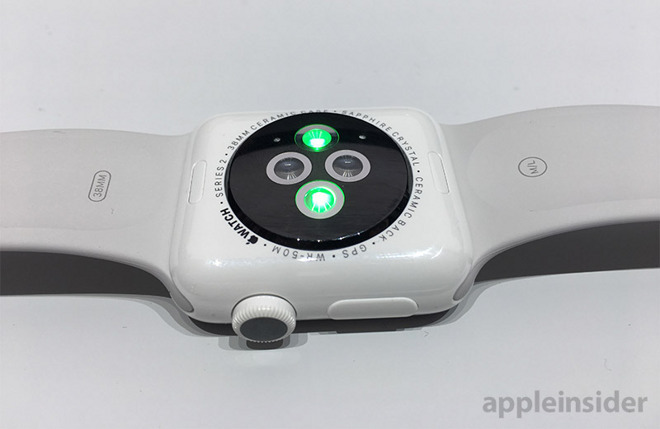Lawsuit claims Apple cribbed Apple Watch heart rate sensor tech, hints at work on glucose monitoring
Health technology startup Omni MedSci, in a patent lawsuit filed on Friday, alleges Apple incorporated infringing technology in its Apple Watch heart rate sensor after reviewing patent-pending specifications with Omni's founder and CTO Dr. Mohammed N. Islam.
Lodged with the Eastern Texas District Court, a jurisdiction that often sides with patent holders, the Omni suit leverages four patents related to wearable optical technology capable of measuring and monitoring physiological attributes. Specifically, the patents-in-suit, as granted, describe methods of measuring various parameters of a user's blood using LED-based sensors.
Invented by Islam and assigned to Omni, U.S. Patent Nos. 9,651,533 and 9,757,040 were granted in 2017, while U.S. Patent Nos. 9,861,286 and 9,885,698 were issued in 2018.
Each patent references a wearable device that uses a light source, in some cases near-infrared LED arrays, alongside a receiver module to capture non-invasive blood measurements. Apple Watch implements similar technology to obtain the heart rate of its wearer.
According to the document, Islam met with Dr. Michael O'Reilly, a medical technology specialist who joined Apple earlier that year, and hardware manager Michael Hillman to discuss what were then patent applications in June 2014, three months prior to Apple's unveiling of Apple Watch in September. Hillman subsequently invited Islam to meet with another Apple team in February 2015, less than two months before Watch went up for preorder.
About two weeks after the team meeting, Islam amended the pending IP to include extensive mention of "wearable devices" and "LED" light sources. Notably, each patent initially included heavy emphasis on laser technology, specifically short-wave infrared modules, for monitoring distinct physical attributes. For example, the '040 and '286 patents target tooth decay, while the '533 patent covers technology for detecting pharmaceuticals in a patient's bloodstream.
The changes to the patent language and, more importantly, their respective claims are not noted in the lawsuit.
The suit further notes Apple VP of product marketing Greg Joswiak in an email dated July 14, 2016 invited Islam to discuss the pending technology with a team at Apple. At the ensuing meeting on July 18, Islam shared the patents-in-suit with Apple employees, the lawsuit says. Islam continued discussions with unnamed Apple personnel regarding the status of his patents.
In December 2017, Islam emailed O'Reilly to "identify" the issued '533 and '040 patents. What was said in the email is unknown, though it can be assumed Islam requested clarification as to whether the technology had been incorporated into Apple Watch.
By the first meeting in 2014, however, Apple had already finalized its Apple Watch heart rate sensor, and subsequently presented the technology in detail at the device's unveiling event.
"We [Apple] don't wish to receive any information about any of your IP [Intellectual Property]," O'Reilly said, according to the lawsuit.
That Apple relied on Omni's patents is questionable, but perhaps more dubious are the modifications Islam incorporated into his IP after the Apple conference.
While Apple has yet to comment on the matter, the company's willingness to meet with the startup founder suggests further research into advanced sensor technology. As Islam outlined in all four patents-in-suit, laser light can be more effective than conventional LEDs in picking up blood signatures.
In particular, Islam's '698 patent covers non-invasive methods of monitoring glucose levels in a patient's blood, a solution Apple is rumored to be investigating.
Islam seeks damages for infringement, court expenses and a preliminary or permanent injunction against products found to infringe on the patents-in-suit.
 Mikey Campbell
Mikey Campbell











 Malcolm Owen
Malcolm Owen
 William Gallagher and Mike Wuerthele
William Gallagher and Mike Wuerthele
 Christine McKee
Christine McKee
 William Gallagher
William Gallagher

 Marko Zivkovic
Marko Zivkovic









